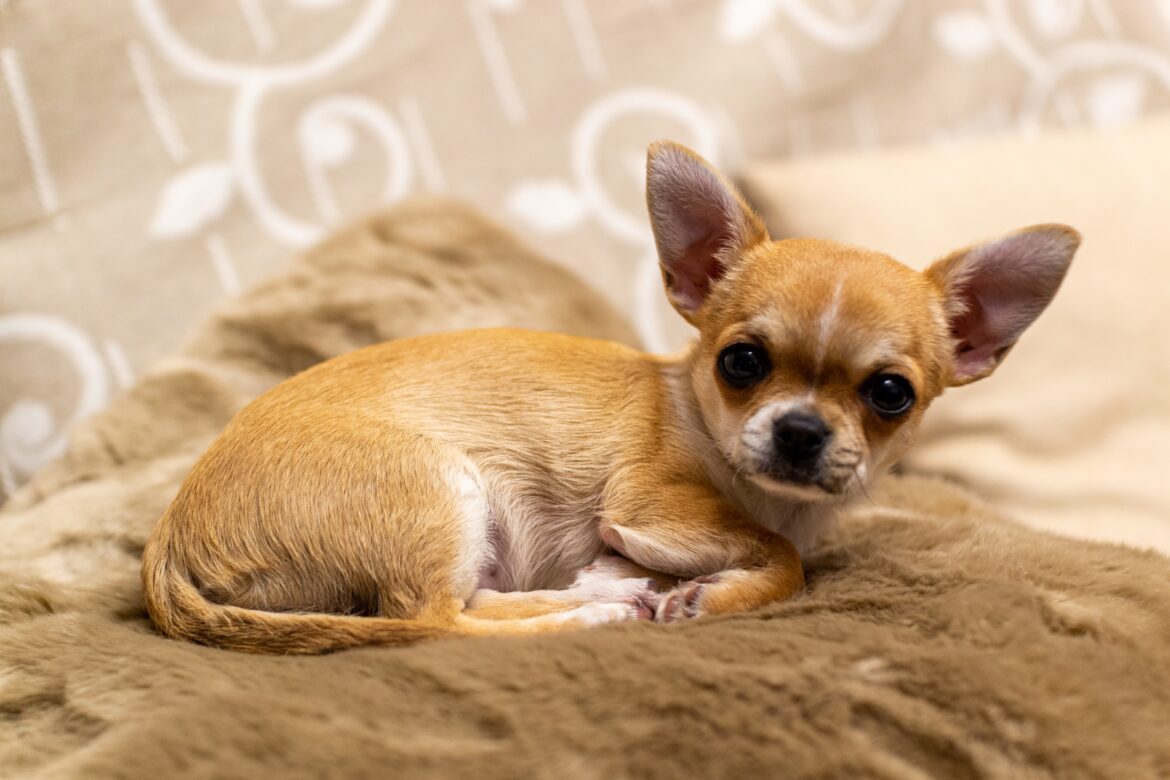Introduction to native Mexican dog breed
People love visiting Mexico because of its rich history, delicious cuisine, a wide variety of unique beverages, and stunning natural landscapes.
Some of the world’s oldest dog breeds may be found in Mexico, which may come as a pleasant surprise to dog owners.
Although Mexico isn’t home to nearly as many dog breeds as Germany or France, but these seven feisty Mexican dog breeds’ certainly know how to steal the show.
Chamuco (Mexican Pitbull)
One of the most popular Mexican dog breeds is the Chamuco, commonly known as the Mexican Pit Bull because of its fierce and powerful appearance.
Although the Chamuco is endangered, legends and stories about this mythical dog persist with great acclaim throughout Mexico. Many of these tales feature the real devil, but Chamuco dogs also make appearances.
The startling similarity to the American Pit Bull Terrier is the first thing that jumps out at you. This is to be expected, given that they are a hybrid of the American Bulldog, the Mexican Bulldog, the American Staffordshire terrier, and the Pit Bull Terrier.
We regret to inform you that these interesting dog breeds are not common household pets in Mexico. They are instead bred for use in underground dog fights, which are highly illegal. It’s a shame since, with the right training, they could make wonderful pets.
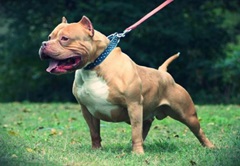
Image Credit- Getty Images
Chihuahua
One of the most popular Mexican dog breeds is the Chihuahua, which is also well-known internationally. Although it’s a national symbol of Mexico, no one knows for sure how the Chihuahua first came to the country. This breed of dog is well-known for its vivacious and confident character, which it brings to its new home in spades.
Chihuahuas are tiny dogs that often don’t become any bigger than 6 pounds. You might encounter one with white fur, black fur, chocolate fur, fawn fur, gold fur, cream fur, or a mixture of these colors.
Not only may you choose from long- or short-haired breeds, but you might be astonished to learn that there are even hairless varieties. While they all have their own distinct appearances, they are all the right size to cuddle up with for hours on end if you are a dog lover.
Chihuahuas have personalities as varied as their coats. Some of them are fierce and noisy, while others are meek and shy. Their unwavering loyalty and devotion to their human companions are constant traits.
If you’re looking for a dog for your urban or tiny apartment home, a chihuahua can be a good choice due to its small size and low maintenance needs.

chihuahua image credit-Lesia-Kapinosova_Shutterstock
Long-haired Chihuahua
To begin, Chihuahuas are not a separate Mexican dog breed. Chihuahuas with long hair and Chihuahuas with short hair are both Chihuahuas. They are distinguishable from one another because of the length of their coats.
Possessing a Protracted Coiffure Long-haired Chihuahuas look fluffier and cozier than their short-haired counterparts.
The only difference between long- and short-hair Chihuahuas is the length of their coats; otherwise, the two types of dogs are identical in size, personality, and other characteristics. To make things easier, we’ve compiled a list of the long-haired Chihuahua’s most notable distinguishing features, health concerns, and more.
Long-haired Chihuahuas need more attention to their appearance than their short-haired counterparts because of their hair length. Tangles and mats are easy to avoid with just a little brushing because their size is comparable to that of short hair.
Though they’re relatively little, Chihuahuas with long hair have tremendous personalities. Whether long-hair or short-hair, Chihuahuas are devoted and smart companions.
However, they may be quite obstinate at times!
We suggest you brush your long-haired Chihuahua at least once a week, but more often if possible. This compact comb is ideal for the everyday grooming of your Chihuahua’s lengthy coat.
Grooming aside, long-haired Chihuahuas share all the same characteristics as their short-haired counterparts, including temperament, health concerns, and size.
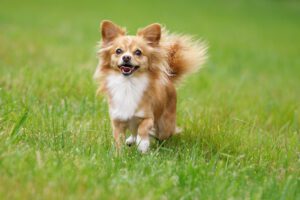
Image Credit-Getty Images
Xoloitzcuintli: Mexican Hairless Dog
Show-low-eats-QUEENT-lee is their preferred pronunciation; however, they are also commonly referred to as the Mexican hairless dog. These unique dog breeds are available in three sizes, and the name Xolos is commonly used because it is simple to remember and pronounce.
Despite its ancient Aztec god status, the Xolo is a loving, loyal, and intelligent pet. They make great family pets and like participating in family activities, yet they usually form strong attachments to just one member of the family. The Xolo may resort to destructive behavior if they feel they aren’t getting enough of your time.
These Mexican dogs peaked in popularity during the 1930s and 1940s but have since faded. The United Kennel Club officially acknowledged mexican hairless dogs in 1992, and the American Kennel Club readmitted them to the Non-Sporting Group in 2011.

Image Credit- TatyanaPanova_Shutterstock
The Calupoh (Mexican Wolfdog)
The Calupoh dog, commonly known as the Mexican Wolfdog, is one of the rare dog breeds in Mexico. Additionally, wolf characteristics are implied by the moniker. In the 1990s, scientists developed a novel hybrid dog by mixing together wolves and domesticated canines.
Although they shared a common ancestry with wolves, these animals proved useful in a variety of contexts. In Mexico, for instance, Calupohs have been put to use as sheepdogs, cattle dogs, and even companion dogs. However, due to their strong sense of territory, they are best utilized in a guard dog capacity.
A Calupoh is a hardy, long-lived dog. Among dogs, they are among the most feared because of their strength and agility. As was the goal of the breeding process, however, Calupohs have a more even temperament than the primordial wolf.
When in full stride, their long legs allow them to travel at incredible speeds. Their sleek, muscular build allows them to move with speed rivaling that of a German Shepherd. A powerful skull, neck, and head contribute to the dog’s total strength.
There is a dearth of literature about these canine breeds that resemble wolves. Despite this, they remain one of the most intriguing Mexican dog breeds, and their mystery only adds to their appeal.
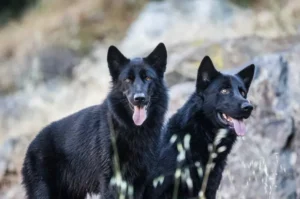
Image Credit-Getty Images
Chinese Crested Dog
Contrary to what their name suggests, Chinese Crested dogs are not originally from China. Hairless dogs were first brought to China from Mexico, where they reportedly evolved from a Mexican ancestor.
One look at one of these canines, and you’ll know why they’ve been called “a Dr. Seuss dog.” They are hairless save for a long, “crested,” mane on their forehead and a feathery tail and hooves.
Depending on the one dominant gene they inherit, some members of this breed can be born with full coats of hair. Without hair, their skin is velvety smooth, and most will have misaligned or nonexistent teeth.
The Chinese Crested dog is an excellent choice if you want a dog who is devoted to its master and spends most of its time sitting in his or her lap. One of the reasons they are so well suited to the elderly is that they like to spend most of their time indoors.
However, Chinese Crested dogs are a highly intelligent and endearing species that will shower their master with love.
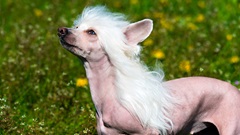
Image Credit-Getty Images
Techichi
The Techichi, one of the Mexican dog breeds which originated in Mexico in the ninth century, is widely believed to be the ancestor of modern Chihuahuas. In the Aztec and Toltec cultures, this kind of dog was a common pet; they were so highly esteemed that their owners were sometimes buried with them.
Although the Chihuahua’s origins are unclear, the city of Chihuahua, Mexico, is credited with being the first significant export center for this breed, which is how the city got its name. The coat of this breed was developed to be short.
The long-coated variety of the Techichi is said to have descended through the introduction of genes from other breeds, most notably the Yorkshire Terrier and the Papillon.
Their average stature is between 6 and 9 inches, and their average weight is less than 9 pounds. The average lifespan of a dog of this breed is 12-14 years.
The breed is known for its loyalty, intelligence, and speed. They exhibit numerous terrier characteristics, such as a high degree of activity and energy.
They are known to be hostile toward anyone the breed has not established as its master, and they have a low tolerance for cold (hence they shouldn’t be kept outside). In addition to being notoriously fussy eaters, this breed has a medium to high propensity for barking.

Image Credit- Getty Images
Mexican dog breed in a nutshell
Everywhere in the world, people will tell you that dogs are “man’s best friend,” regardless of the breed. The close relationship between dogs and humans has endured for thousands of years and will do so for many more.
Multiple studies have found that having a pet is good for your health, both physically and mentally, and that their unconditional love and companionship is priceless.
Because of their distinct personalities and impressive abilities, the most popular Mexican dog breeds are among the most adored canines in the world.
Each of these seven dog breeds hails from Mexico, a country that adds a great deal of flavor to our lives. As a dog enthusiast, you should familiarize yourself with every breed that exists. You never know which ones you’ve passed over in the past will end up being the perfect fit for your lifestyle and become a permanent part of your house.
You should now have sufficient knowledge to make an informed decision about which Mexican dog breed to purchase.
Faqs
What are the Mexican hairless dogs used for?
This ancient breed was utilized for a number of functions, including companionship, hunting and defense. The dogs also were believed to have healing properties for diseases such as arthritis. In fact, they give out more body heat than coated dogs and create great hot water bottles.
What breeds are Mexican street dogs?
Terrier, labrador, spaniel, poodle, German shepherd, pit bull, boxer, cattle dog, Doberman, dachshund, basenji, beagle, husky, ridgeback, and even vizsla genes are all present in the Mexican street dog. There are no Coton de Tulear around here yet.
